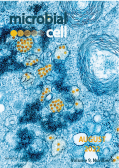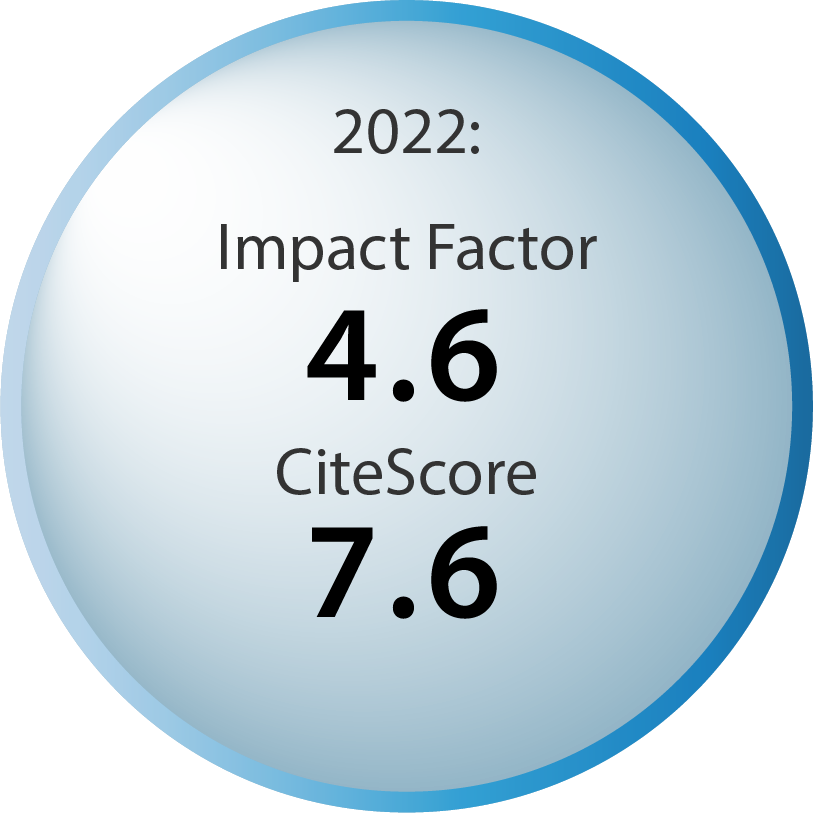Table of contents
Volume 9, Issue 8, pp. 141 - 157, August 2022
Cover: Colorized transmission electron micrograph of Vero E6 Cells in culture infected with Yellow Fever Virus particles found within distended regions of the endoplasmic reticulum. The image was captured and color-enhanced at the National Institute of Allergy and Infectious Diseases (NIAID) Integrated Research Facility in Fort Detrick, Maryland (USA); image retrieved via Flickr and modified by MIC. The cover is published under the Creative Commons Attribution (CC BY) license.
Enlarge issue cover
The rise of Candida auris: from unique traits to co-infection potential
Nadine B. Egger, Katharina Kainz, Adina Schulze, Maria A. Bauer, Frank Madeo and Didac Carmona-Gutierrez
Editorial |
page 141-144 | 10.15698/mic2022.08.782 | Full text | PDF |
Abstract
Candida auris is a multidrug resistant (MDR) fungal pathogen with a crude mortality rate of 30-60%. First identified in 2009, C. auris has been rapidly rising to become a global risk in clinical settings and was declared an urgent health threat by the Centers for Disease Control and Prevention (CDC). A concerted global action is thus needed to successfully tackle the challenges created by this emerging fungal pathogen. In this brief article, we underline the importance of unique virulence traits, including its easy transformation, its persistence outside the host and its resilience against multiple cellular stresses, as well as of environmental factors that have mainly contributed to the rise of this superbug.
Up-regulation of Osh6 boosts an anti-aging membrane trafficking pathway toward vacuoles
Ilham Kadhim, Nazneen Begum, William King, Licheng Xu and Fusheng Tang
Research Articles |
page 145-157 | 10.15698/mic2022.08.783 | Full text | PDF |
Abstract
Members of the family of oxysterol-binding proteins mediate non-vesicular lipid transport between membranes and contribute to longevity in different manners. We previously found that a 2-fold up-regulation of Osh6, one of seven yeast oxysterol-binding proteins, remedies vacuolar morphology defects in mid-aged cells, partly down-regulates the target of rapamycin complex 1 (TORC1), and increases the replicative lifespan. At the molecular level, Osh6 transports phosphatidylserine (PS) and phosphatidylinositol-4-phosphate (PI4P) between the endoplasmic reticulum (ER) and the plasma membrane (PM). To decipher how an ER-PM working protein controls vacuolar morphology, we tested genetic interactions between OSH6 and DRS2, whose protein flips PS from the lumen to the cytosolic side of the Golgi, the organelle between ER and vacuoles in many pathways. Up-regulated OSH6 complemented vacuolar morphology of drs2∆ and enriched PI4P on the Golgi, indicating that Osh6 also works on the Golgi. This altered PI4P-enrichment led to a delay in the secretion of the proton ATPase Pma1 to the PM and a rerouting of Pma1 to vacuoles in a manner dependent on the trans-Golgi network (TGN) to late endosome (LE) trafficking pathway. Since the TGN-LE pathway controls endosomal and vacuolar TORC1, it may be the anti-aging pathway boosted by up-regulated Osh6.










